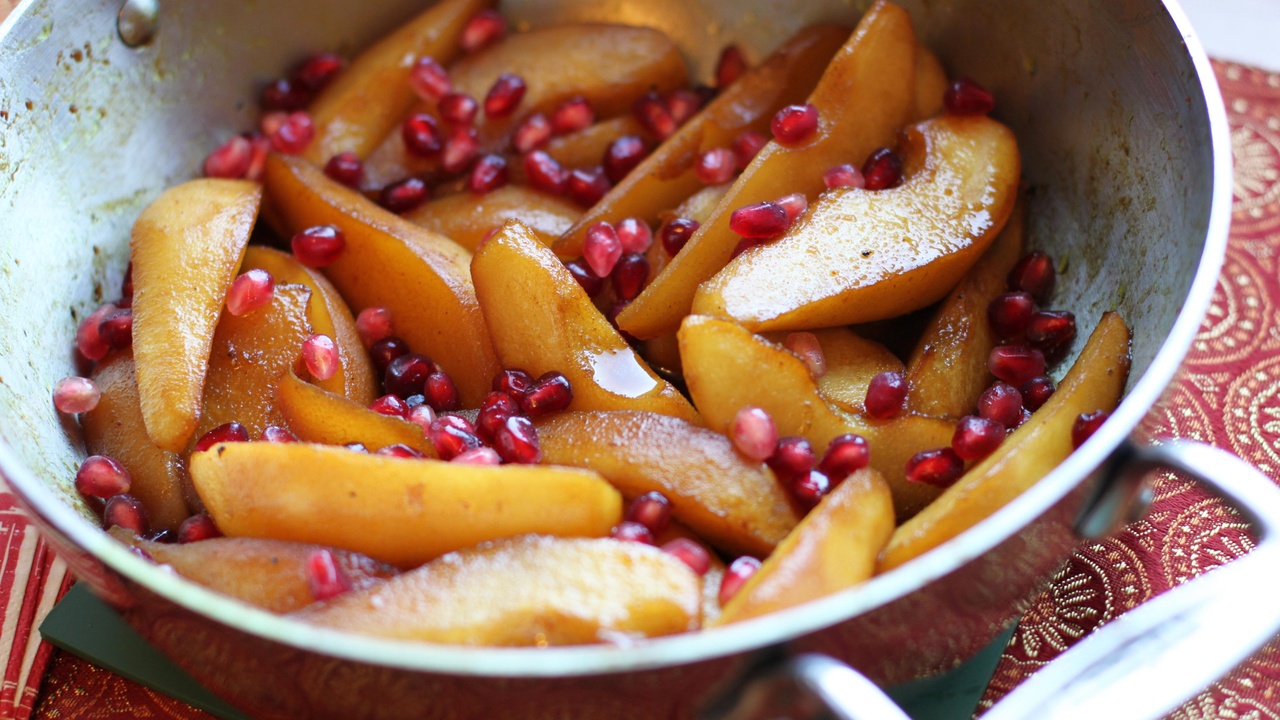Mango Salsa

Get a taste of the tropics and a feast for the senses with this thyroid-friendly tropical favorite. This vibrant mango salsa is a sweet, salty, spicy, and tangy blend of fresh, nutrient-dense ingredients. Whether you're making grilled fish, shrimp, chicken, or tacos, or looking for a new dance partner for your favorite tortilla chips, this refreshing salsa is a fiesta for your taste buds.
NEW! Watch me make this recipe on the Hypothyroid Chef Show:
🎥 Pan-Seared Mahi Mahi with Mango Salsa
In this episode, I show you how to make this mango salsa from scratch, along with a full 30-minute tropical dinner featuring crispy, pan-seared mahi mahi and turmeric cauliflower rice with peas. I also demonstrate my favorite way to cut a mango (spoiler: the peeled method wins for yield!).
In the video, I'll walk you through:
-
How to peel and cut a mango
-
The easiest way to make this salsa
-
How to pan-sear mahi mahi to flaky perfection
-
My quick turmeric cauliflower rice side
The best part? The entire meal is gluten-free, dairy-free, Paleo, and AIP-friendly!
Full disclosure: Some of the links in this post may be affiliate links. As an Amazon Associate, I earn from qualifying purchases. Purchasing a product using one of these links will support my work at no additional cost to you. Please know that I only recommend products I wholeheartedly stand by.
Why You'll Love This Mango Salsa
I first whipped this together for a batch of fish tacos and was instantly hooked. It quickly became a go-to recipe, especially during mango season (May through September). It's incredibly easy to make and full of thyroid-supportive ingredients.
This salsa is naturally:
-
Gluten-free
-
Dairy-free
-
Paleo-compliant
-
AIP-friendly with a few simple modifications
Chef’s Notes on Mangoes
There are 2 main types of mangoes and you can use either variety, Tommy or Ataulfo, for this recipe. Just be sure they’re juicy and ripe. “Tommy Atkins” is the most common type of mango we see here in the States. They have a duo-tone red and yellow-green peel. This is your classic mango.
Ataulfo mangoes have golden-orange skin. They’re a bit smaller in size, so you may need to use 2 for this recipe. The special thing about them is both the intense mango flavor and their incredibly silky, almost creamy texture. Tropical heaven. When Ataulfo mangoes are available, I always go for those.
🥭 Tommy Atkins Mangoes: Larger, with reddish-green skin; most common in the U.S.
🥭 Ataulfo Mangoes (Honey mangoes): Smaller, golden-orange, super silky texture—my favorite when available.
How to tell if a mango is ripe:
You can tell when a mango is ripe by both the smell and the softness. A ripe mango should smell fruity at the stem and yield slightly under finger pressure (like a ripe avocado). If you can’t find ripe mangoes, simply take them home and let them ripen on the counter or in a paper bag for a day or two, until soft.
Mango season runs May through September, so keep an eye out for them at your local grocer during those warmer months.

My Preferred Way to Cut a Mango
There are two main ways to cut a mango: the peeled way and the unpeeled way. Most people seem to prefer the unpeeled method because, without the right peeler, it can be difficult to peel a mango, and they're slippery when peeled.
Mango skin is not recommended for eating, so it is necessary to somehow remove the skin.
Regardless of the method you choose, one thing to note is that mangoes have a large, almond-shaped pit, which is oriented in a way that mirrors the shape of the fruit. So first, you want to cut away the "cheeks" of the mango, starting from the stem downward. Curve your knife around the pit, hugging it as closely as possible. Then, cut any remaining fruit away from the pit, using a paring knife.
The Unpeeled Method: Cut the cheeks away from the mango. Use a paring knife to score the fruit, being careful not to cut through the skin (or you!). Apply pressure to the skin side to 'pop' the mango inside-out. Next, use a paring knife to cut the mango cubes away from the skin. The basic idea is shown in the image below:

My preferred method is the peeled method, as it yields a better quantity of fruit. I find the unpeeled method leaves a lot of mango flesh behind, because it can be awkward to cut the cubes away from the peel. With the peeled method, you end up with more mango and a better dice. However, peeling a mango works best with a good horizontal peeler (or some deft skills with a sharp paring knife).
The Peeled Method: To peel the mango, my tool of choice is a ceramic-bladed, horizontal vegetable peeler (sometimes called a Y-peeler). The super-sharp ceramic blade makes short work of thick mango skin (or even butternut squash rind!). Work your way around the fruit with the peeler until the skin is completely removed.
Next, cut the cheeks off the mango, keeping in mind that the pit inside is shaped like a giant almond, and its orientation mirrors the shape of the fruit. So, start at the stem, and slice downward along the cheek, hugging the pit as you go. Repeat on the other side, and then use a small paring knife to slice any remaining fruit flesh away from the pit.
Here's a quick visual demo on my Instagram:
View this post on Instagram
These bright ingredients make this salsa not just tasty, but also a nourishing choice for anyone supporting thyroid health. Let's take a closer look at the nutrition...
Thyroid-healthy Recipe Highlights:
-
Mango is loaded with nutrients, including key thyroid-supporting nutrients like B vitamins, vitamin A, potassium, and magnesium. One cup provides 67% DV of Vitamin C, which supports the immune system, cellular health, and aids iron absorption. As a sweet treat, it's relatively low in calories at 100 calories per cup, while also providing 2.6 grams of fiber to support digestion.
-
Cilantro: Studies have shown that cilantro can help accelerate the body’s excretion of mercury and lead. Heavy metal toxicity from mercury has been linked to an increase in thyroid antibodies.
-
Lime Juice: Limes are high in vitamin C, with one lime providing 22% DV. A study shared in the Journal of Clinical Endocrinology and Metabolism stated, “In patients with hypothyroidism and gastrointestinal pathology, vitamin C improves the abnormalities in serum free T4, T3, and TSH concentrations.”
Make It a Meal with Mahi Mahi + Cauliflower Rice
This vibrant mango salsa isn’t just a standalone - it's the star of a full tropical dinner I demo on the Hypothyroid Chef Show! Watch the full episode here to see how it all comes together in about 30 minutes:
🎥 WATCH HERE: Pan-Seared Mahi Mahi with Mango Salsa
Here’s a quick overview of the complete recipe:
-
Pan-Seared Mahi Mahi:
Season with salt, dust with cassava flour (optional), and pan-sear in coconut oil, ghee, or avocado oil for 2–3 minutes per side, until golden and flaky. Mahi mahi is a lean protein rich in B vitamins, selenium, and iodine—great for thyroid support. -
Turmeric Cauliflower Rice with Peas:
Sauté frozen cauliflower rice in ghee, add frozen peas, and grate in fresh turmeric. Salt to taste. It’s a quick, nutrient-dense side full of fiber and anti-inflammatory goodness.
Together, it’s a fresh, anti-inflammatory dinner that’s gluten-free, dairy-free, Paleo, and AIP-friendly (with a few easy swaps).
Happy cooking, happy thriving, and enjoy the Mango Salsa recipe (below)!

P.S. Want More Recipes Like This? Grab my Thyroid-Healthy Everyday eCookbook—featuring 50+ quick and easy anti-inflammatory recipes your whole family will love.
More Thyroid-Friendly Snacks to Try:
- AIP Artichoke Dip with Garlic Scapes
- AIP Cranberry Cocktail Meatballs
- Prosciutto-Wrapped Asparagus
- Sweet & Spicy Pumpkin Seed Brittle
- Dairy-free Arugula Lemon Pesto with Beet Chips
Subscribe to my free newsletter for fresh recipes & lifestyle tips, delivered weekly, and receive a free gift!
By submitting this form, you agree to receive ongoing updates from Hypothyroid Chef










